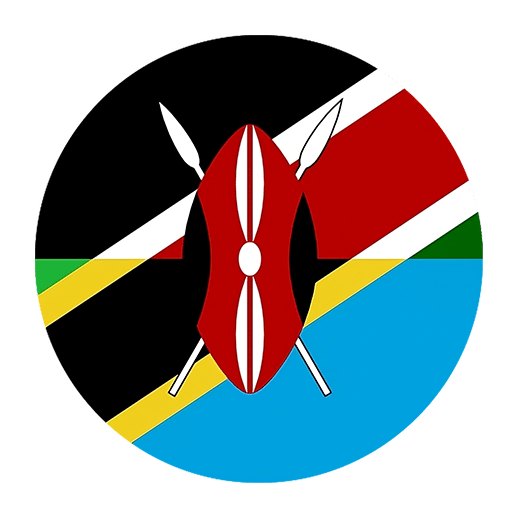Swahili, also known as Kiswahili, is one of the most widely spoken languages in Africa, acting as a lingua franca in many East African nations including Kenya, Tanzania, Uganda, and the Democratic Republic of Congo. More than just a means of communication, Swahili plays a significant role in various socio-political and cultural spheres. One of the areas where Swahili has emerged as a powerful tool is in African environmental movements. This article explores the influence and impact of Swahili in advocating for environmental conservation and sustainability across the African continent.
The Historical Context of Swahili
Swahili has a rich history that dates back over a thousand years. Originating from the coastal regions of East Africa, it has been influenced by Arabic, Portuguese, German, and English due to trade, colonization, and missionary activities. This blend of linguistic influences has made Swahili a versatile and adaptive language, capable of transcending ethnic and national boundaries.
The historical evolution of Swahili has also seen its use in political activism and social movements. During the struggle for independence in various East African countries, Swahili was often employed as a unifying language that could rally diverse groups towards a common cause. This historical backdrop sets the stage for understanding how Swahili continues to serve as a unifying and mobilizing force, particularly in environmental movements.
Swahili in Environmental Advocacy
Grassroots Movements
Environmental activism in Africa often starts at the grassroots level, where communities are directly affected by issues such as deforestation, water scarcity, and pollution. Swahili is frequently the language of choice for disseminating information and educating the public about these environmental concerns.
For instance, in Tanzania, community-based organizations like the Tanzania Forest Conservation Group (TFCG) use Swahili to engage local communities in forest conservation efforts. By conducting workshops, distributing pamphlets, and holding public meetings in Swahili, these organizations can effectively communicate the importance of environmental conservation to a broader audience.
Media and Communication
The role of Swahili in media cannot be overstated. Radio and television programs in Swahili reach millions of listeners and viewers across East Africa. Environmental programs broadcast in Swahili have been instrumental in raising awareness about issues such as climate change, wildlife conservation, and sustainable farming practices.
For example, the popular Swahili radio program “Hali ya Hewa” (Weather Conditions) not only provides weather forecasts but also educates the public on climate change and its impact on local communities. Such programs make complex scientific concepts accessible to the general population, empowering them with the knowledge needed to participate in environmental conservation.
Swahili and Policy Advocacy
Swahili is not just limited to grassroots movements and media but also plays a crucial role in policy advocacy. Environmental organizations often use Swahili to lobby for policy changes at local, national, and regional levels.
Local Governance
In many East African countries, local government meetings and public consultations are conducted in Swahili. Environmental activists leverage these platforms to advocate for policies that promote sustainable development. By using Swahili, they ensure that their messages resonate with both policymakers and the general public.
Regional Cooperation
The East African Community (EAC), a regional intergovernmental organization, uses Swahili as one of its official languages. This facilitates regional cooperation on environmental issues that transcend national borders, such as the management of shared water bodies like Lake Victoria. Swahili enables seamless communication and coordination among member states, enhancing the effectiveness of regional environmental initiatives.
Swahili in Education and Research
Education is a critical component of any environmental movement, and Swahili plays a vital role in this regard.
Environmental Education
Many schools and universities in East Africa incorporate environmental education into their curricula, often using Swahili as the medium of instruction. This ensures that students from diverse linguistic backgrounds can understand and engage with environmental issues from a young age.
For instance, the “Green Schools Program” in Kenya uses Swahili to teach students about sustainable practices such as recycling, tree planting, and water conservation. This not only instills environmental values in the younger generation but also encourages them to become advocates for environmental conservation in their communities.
Research and Publications
Swahili is also used in academic research and publications on environmental issues. By publishing research findings in Swahili, scholars can reach a wider audience, including policymakers, community leaders, and the general public. This democratizes access to knowledge and facilitates informed decision-making on environmental matters.
Swahili and Cultural Connections
Environmental movements often draw on cultural narratives and traditional knowledge to promote conservation. Swahili, with its rich cultural heritage, serves as a bridge between modern environmental science and traditional ecological wisdom.
Traditional Knowledge
Many African communities have a deep understanding of their local ecosystems, passed down through generations. Swahili provides a linguistic framework for documenting and sharing this traditional knowledge. For example, traditional practices for water management, sustainable farming, and herbal medicine are often conveyed in Swahili. This integration of traditional knowledge and modern science creates a more holistic approach to environmental conservation.
Storytelling and Art
Swahili is also a medium for storytelling and artistic expression, which can be powerful tools for environmental advocacy. Stories, songs, and poems in Swahili often highlight the beauty of nature and the importance of preserving it for future generations. Environmental activists and artists collaborate to create compelling narratives that inspire people to take action for the environment.
Challenges and Opportunities
While Swahili has made significant contributions to African environmental movements, there are also challenges that need to be addressed.
Linguistic Diversity
Africa is home to a vast array of languages, and not everyone speaks Swahili. This linguistic diversity can sometimes hinder the reach of Swahili-based environmental initiatives. To overcome this, environmental organizations often collaborate with local translators and use multilingual approaches to ensure their messages are accessible to all.
Resource Constraints
Many environmental organizations in Africa operate with limited resources. This can restrict their ability to produce high-quality educational materials and conduct extensive outreach in Swahili. Increased funding and support from governments, NGOs, and international partners are needed to amplify the impact of Swahili in environmental advocacy.
Technological Integration
The integration of technology in environmental advocacy presents both challenges and opportunities. While digital platforms can extend the reach of Swahili-based initiatives, there is also a digital divide in many African communities. Ensuring equitable access to technology is crucial for maximizing the potential of Swahili in environmental movements.
The Future of Swahili in Environmental Movements
Despite these challenges, the future of Swahili in African environmental movements looks promising. As the language continues to grow in prominence, it will likely play an even more significant role in shaping the continent’s environmental future.
Youth Engagement
The younger generation is increasingly engaged in environmental activism, and many young Africans speak Swahili. By harnessing the energy and creativity of youth, environmental movements can leverage Swahili to drive innovative solutions and inspire collective action.
Global Connections
Swahili is not confined to Africa; it is also spoken by diaspora communities around the world. This global reach provides an opportunity to build international coalitions for environmental advocacy. By connecting with Swahili-speaking communities abroad, African environmental movements can gain additional support and resources.
Policy Influence
As Swahili continues to be used in policy advocacy, it has the potential to influence environmental legislation and governance at higher levels. By articulating the needs and aspirations of local communities in Swahili, activists can ensure that environmental policies are inclusive and effective.
Conclusion
Swahili plays a multifaceted role in African environmental movements, serving as a powerful tool for communication, education, policy advocacy, and cultural connection. From grassroots activism to regional cooperation, Swahili helps bridge gaps and unite diverse communities in the common cause of environmental conservation.
As Africa faces increasing environmental challenges, the importance of Swahili in advocating for sustainable solutions cannot be overstated. By leveraging the strengths of this dynamic language, environmental movements can foster a more resilient and sustainable future for the continent and beyond.

